A game mechanic where location is simplified to a single dimension
There are a whole lot of ways of quantifying location in both analog and digital games. Squares, hexes, triangles, strange octagon/square hybrids – it all exists. There certainly are good reasons for certain games to use these options, and you can probably think of some of the pros and cons with each in just a few moments. Well, maybe a little longer for the octagon/square thing.
In an effort to simplify your game, consider treating location as a single-dimensional value. If your game doesn’t actually get much in the way of interesting decisions or immersive experience by giving the player a large map to flounder in, a single-dimension location can remove a lot of unnecessary complexity.
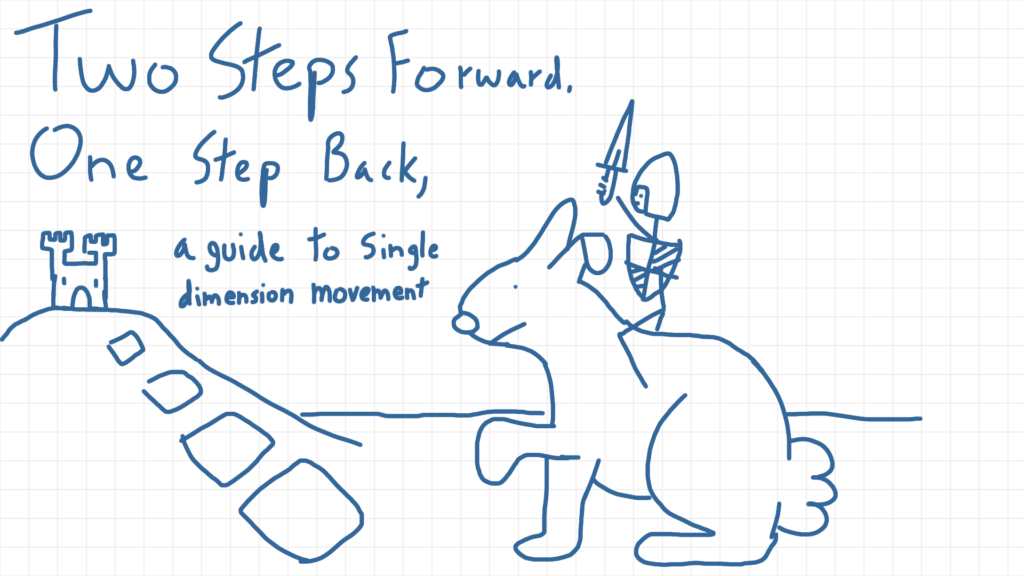
When you read “single dimension”, think about relative distance to something. For example, in an old-school game like Street Fighter or Mortal Kombat, you are either close to your opponent, or far away. Let’s ignore the aspect of jumping for now, though it really isn’t that hard to capture jumping (or crouching) with single-dimension locations either. You have the option of moving to the left or right extremes of the screen, but the only metric that actually matters is your distance to the opponent. Punching an opponent is exactly the same in the middle, left, or right part of the play space.
The key question to address is “can you extract interesting decisions out of the management of relative distance to something?” For those fighting games described above, the answer was clearly yes. When presented with the choice of blocking, advancing, kicking, or punching, a savvy player must pay attention to the distance to his opponent, the range and power of his attack options, and the range and power of his opponent’s attack options. Moving in range for your most powerful attack can become a suboptimal move if it means it puts you in range of your opponent’s even more powerful attack.
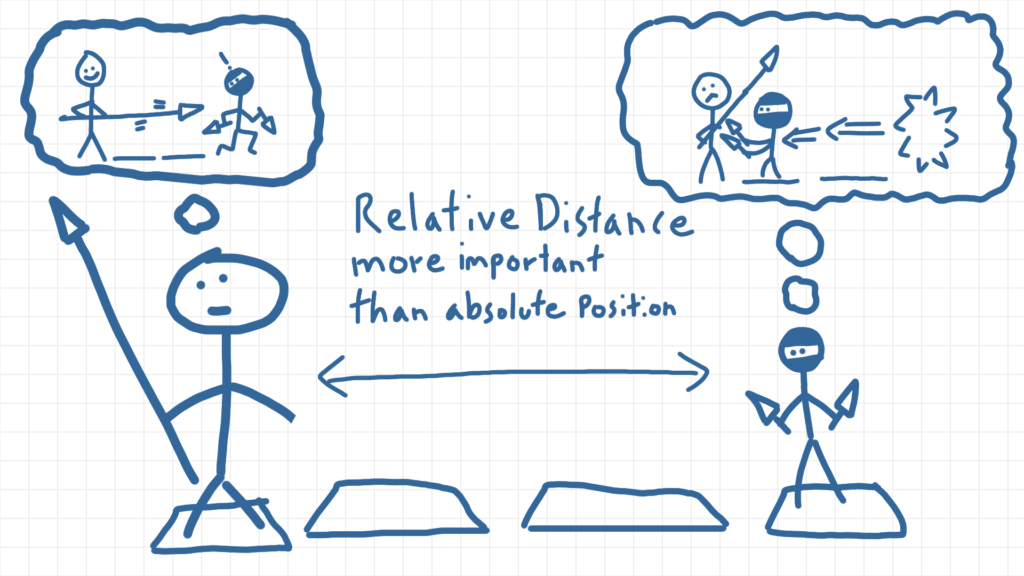
The key question to address is “can you extract interesting decisions out of the management of relative distance to something?”
Game archetypes that benefit from single-dimension location:
-a race to a destination or a race to simply get ahead of the opponent by a certain amount. This almost becomes a victory point track common in many board games. However, the difference is when location can change, or can be considered a resource to be saved up or turned in to power certain actions. For example, perhaps a certain powerful action requires standing still momentarily during a race, thereby manifesting as the opponent gaining a relative lead.
-a tug-of-war or push-of-war game where players’ movements are zero-sum. Every step I advance is because I made you retreat. In many ways, this is almost a victory-point track, with the key difference being that the players’ are trying to move in opposite directions.
-Boxing/fighting game in a constrained arena between 2 players (more than 2 players and somebody is sandwiched in the middle!). This is that quintessential Street Fighter or Mortal Kombat example.
Advantages of single-dimension movement:
-Much cleaner tabletop. Rather than keeping track of a player’s army (or meeples, spaceships, cows, etc) by placing a puck in a square on a large game map, you can get away with just having those components on a track. You could even just insert and remove cards/tokens/chits between player’s entities to represent closing or opening relative distance without having to commit to a board at all.
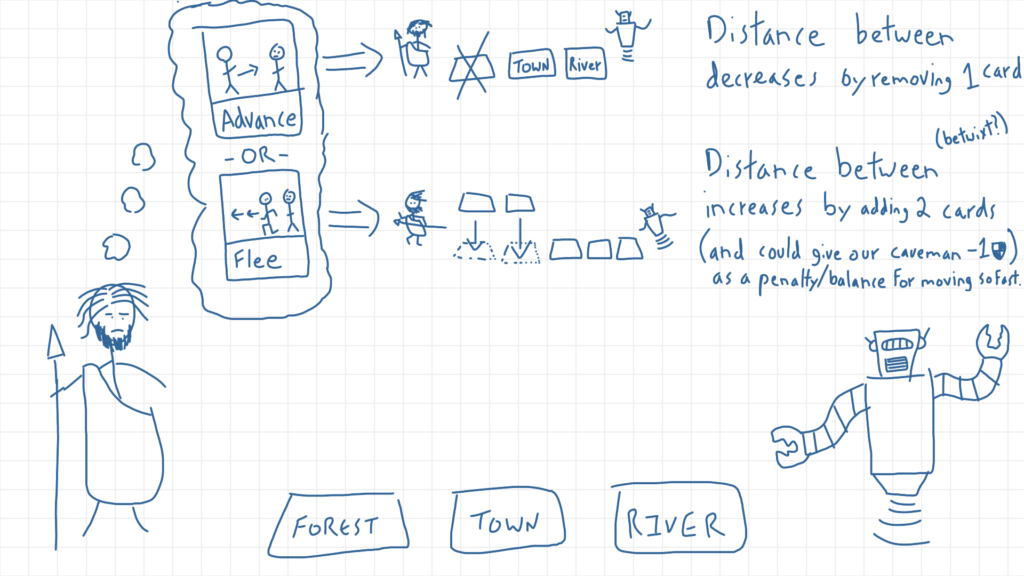
-Much easier line-of-sight calculations. If your sniper is aiming at an enemy machine gunner, you can very easily determine what obstacles and concealment might be in the way – it is everything between the shooter and the target. You can fold range and LOS together for even more abstraction and simplification, like in the example below. Certainly, this level of simplicity might detract from a lot of games, but that same simplicity can highlight some other aspect of the game that really makes it unique.
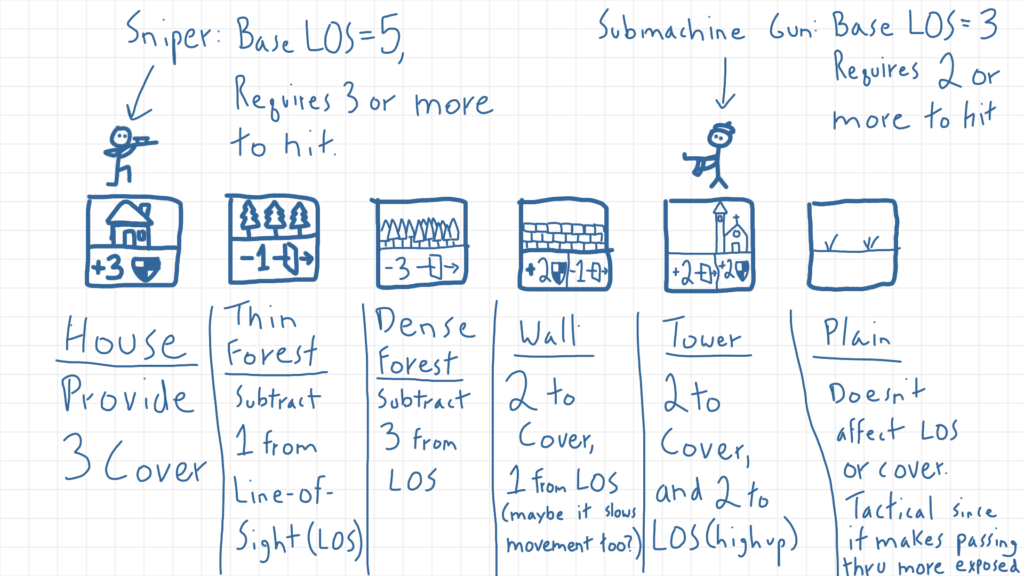
Way to make single-dimension more complex:
-In the military faceoff example between, say, two WW2 era units, you can still inject some positional complexity while still keeping the fight single-dimension. This can be accomplished by providing different “modes” for a particular position, like in the image below. For example, a player can ‘move’ into deeper foliage (reducing LOS) within a forest by giving up the choice to move horizontally either forward or back, represented instead by moving vertically. Similarly, a unit can seek stronger cover by entering a house rather than passing by it, again choosing to move vertically rather than horizontally.
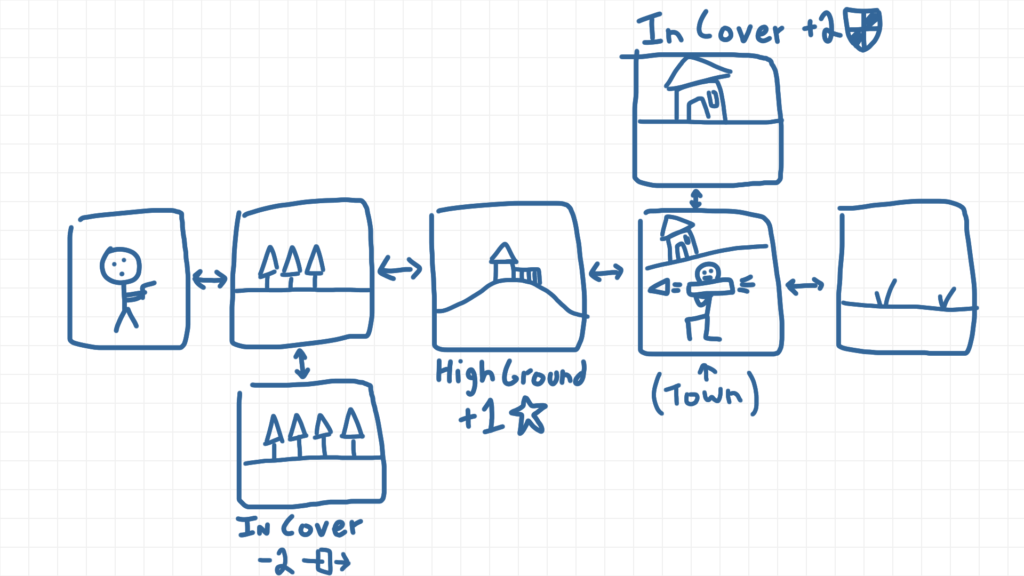
Thematically, the units are still more or less in the same general spot by moving vertically rather than horizontally, but they reap certain benefits instead. This means that your simple LOS and range calculations can remain simple – the cards in between the units still provide the same effects, regardless of whether the units themselves are on the line, or above/below it.